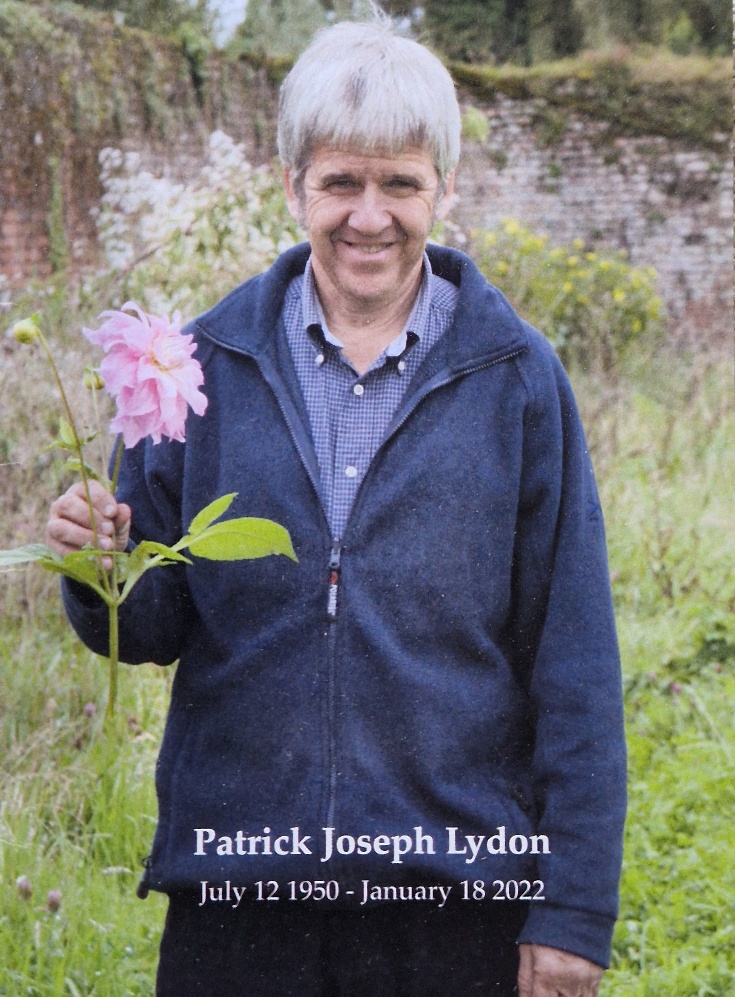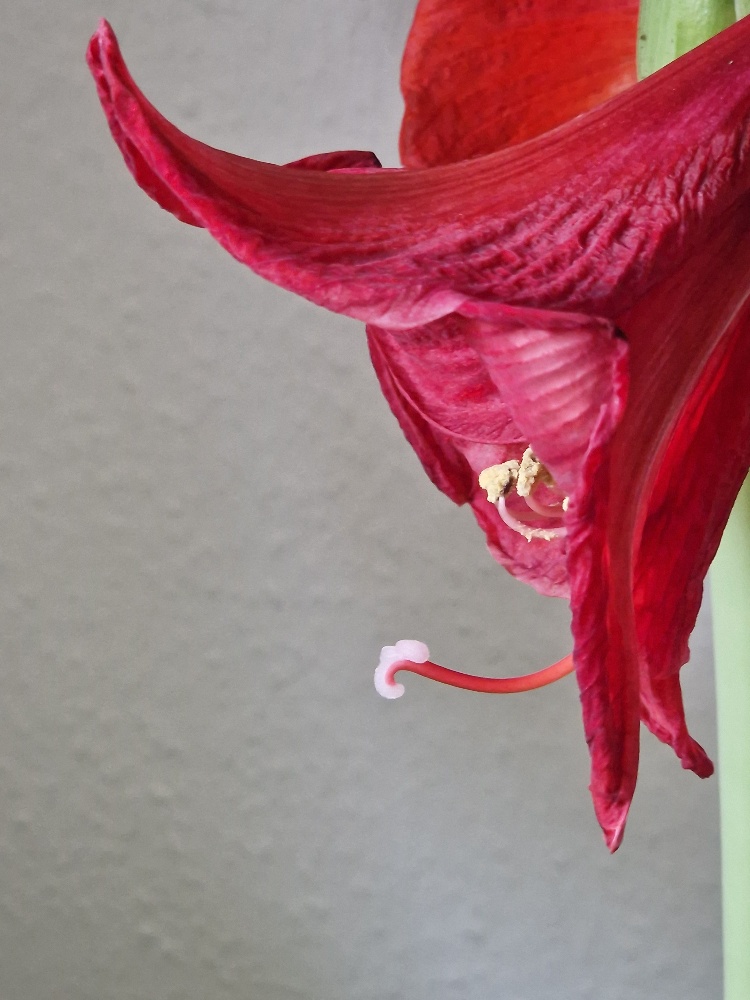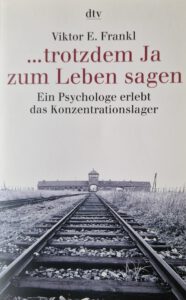The acceptance of oneself is the essence of the whole moral problem and the epitome of a whole outlook on life. That I feed the hungry, that I forgive an insult, that I love my enemy in the name of Christ – all these are undoubtedly great virtues. What I do unto the least of my brethren, that I do unto Christ.
But what if I should discover that the least among them all, the poorest of all the beggars, the most impudent of all the offenders, the very enemy himself – that these are within me, and that I myself stand in need of the alms of my own kindness – that I myself am the enemy who must be loved – what then?
As a rule, the Christian’s attitude is then reversed; there is no longer any question of love or long-suffering; we say to the brother within us „Raca“ and condemn and rage against ourselves. We hide it from the world; we refuse to admit ever having met this least among the lowly in ourselves.
C.G. Jung, Memories, Dreams, Reflections
People are like stained-glass windows. They sparkle and shine when the sun is out, but when the darkness sets in, their true beauty is revealed only if there is a light from within.
Elisabeth Kübler-Ross
This past week, I had the privilege of participating in a powerful workshop entitled „Emotional Sobriety – The Untethered Self„, led by Dr Allen Berger, a gentleman renowned for his work on helping clients transcend addiction and heal relational trauma in the context of attaining Emotional Sobriety.
His approach is framed within the Twelve Steps of Recovery in combination with other resources which have become available to us over the last century, since AA was originally founded in 1935. His own forte is Gestalt Therapy, a methodology he has been using and refining for over forty years.
This workshop was followed by three days of presentations by some world-leading thinkers and practitioners in what we now call „trauma-informed recovery„ as a means of achieving Emotional Sobriety. Presenters, participants, and guests were predominately people who, themselves have been living in long-term, sustained recovery from addiction. We call this „lived experience„.
At „Friendly Circle Berlin„ – a worldwide affiliation of different communities working towards recovery and emotional sobriety, which hosted this annual conference entitled „Recovery Re-imagined„ – we consider lived experience to be an asset, not a handicap. The conference once again confirmed this.
Many of us spend years in resistance before we embark on the journey of recovery. Jung is quoted as stating that: People will do anything, no matter how absurd, in order to avoid facing their own souls. One does not become enlightened by imagining figures of light, but by making the darkness conscious.
The sixteen participants in our workshop, while admitting we had spent much time and energy in the past attempting to avoid facing our own souls, had all experienced that watershed moment, the point of crossing that threshold of fear to now learn more about ourselves.
It was important to acknowledge those fears and to work through them in a spirit of compassion. Primarily compassion for self, which then enables compassion for others, and for the circumstances of life.
In the fragments of insight shared during this workshop, we were confronted with many of the most common ingredients of what could be described as a challenging start to life, or childhood adversity.
These include abandonment, rejection, neglect, humiliation, abuse (physical, sexual, emotional, spiritual, and religious) which lead to shame, guilt, apathy, grief, fear, desire, anger, and pride. These emotional states are the lower levels of consciousness as set out by David Hawkins in his `map of consciousness´.
As we worked through our most pressing issues, we shared that many of us had suffered loss, neglect, and the pain of yearning for, and not receiving, the security, protection, shelter, encouragement, and emotional warmth that every child needs. We need these as much as we need food and water. When not forthcoming, for whatever reasons, our growth and well-being are seriously jeopardised.
The main means of processing yet untended wounds at this workshop was the so-called chair work, a classical element of Gestalt. The client sits in one chair, facing an empty chair in which she imagines that person with whom unfinished business beckons. It is often a parent or another relation, a life partner, or simply a person with whom we have a bond.
It could also be a life circumstance, an illness, for example, or an aspect of our society with which we find ourselves at loggerheads. The diabetes, which makes life difficult, the professional setback once suffered, the failed relationship, the injustice of racism, or even the simple reality of growing old.
With a sure instinct, backed up by tact and compassion, Dr Berger guided the clients through the process. In line with a basic principle discovered in our own inner work, the issue we tend to believe to be of prime importance at the outset generally does not turn out to be the real issue, though it generally does take us there if we follow the clues.
The issue is never the issue.
One participant shared her frustration at not being able to get her children to do what they were told. She was quite genuine in relating her story, peeling away the layers, reflecting upon her fears that if her kids didn’t comply, they would fail.
Prompted to dig deeper, she recognised that if the children failed, she, as the mother, would be seen to be a failure. In her dedication as a mother, wanting to give her kids the things she had missed out upon in her own childhood, she had a strong identification with her role. If she failed in that, she felt she would be devastated.
Going one level deeper, she found that, as a child herself, she was not appreciated for just who she was. In a family system characterised by stress and distress, she was charged with buttressing the daily operation of the family routine.
Essentially it had become her job to prop up her parents. If she failed or even appeared to wobble in this role reversal, she risked being overlooked, discounted, humiliated, or even physically abused by her caregivers.
That chimed strongly with me.
Exploring even deeper, with various characters occupying the chairs at different moments and often swapping places in the course of back-and-forth dialogue, the client came to the searingly painful recognition that her mother had unconsciously decided to emotionally abandon her child to protect the child from the self-proclaimed „mad mother„ she felt herself to be. This was a well-intentioned attempt to protect her own child.
Sitting in the circle of participants observing and energetically supporting this work, my identification with her and her childhood predicament stunned me. It was a punch in the gut.
Upon regathering my faculties, I saw for the first time that my own mother’s moving outside my emotional range, and therefore becoming emotionally unavailable to me, was perhaps, in truth, an unconscious act of love on her part. In her own distress at that time, she sensed her incapacity for intimacy with me and her own capacity for destruction. So, she pulled back.
I cannot know this for sure, of course, and, as she passed away when I was still young, I cannot verify this hunch. My intuition is my only guide.
This clarity represents new ground being broken by the plough of my inner work, pulled along by that innate life force that is driven to manifest our being in all its creativity, vitality, and love.
How could I have missed this possible explanation in all my observing and processing over recent decades? I had been so caught up in the pain of the untended wound that I was too emotionally close to see the wood from the trees.
The explanation of and empathy with the motives of the caregivers, however clear, do not take away the pain of the young child in the original situation. In fact, this work cannot be done without re-feeling some or all of the original pain. This emotional throwback is precisely the reason why so many of us shy away from doing this work in the first place. It certainly has been, in my case.
However, in the safe cave provided by this workshop, supported by an accomplished and caring guide and a group founded on kinship, compassion and the shared passion for healing, I discovered that no amount of pain can ever threaten me again, if I so choose.
In a process akin to peeling an onion, we work our way to the realisation that, while others may be the ones to activate feelings that challenge us as we make our way through the day, the source of our suffering is to be found not `out there´ but within us, namely in our emotional dependencies on people, places, and things to help us feel worthy and lovable. Suffering occurs when I take up a stance of resistance to the pain. Pain is inevitable, suffering is voluntary.
If only this, or if only that, then I would feel OK.
In Dr Berger’s words, Emotional Sobriety is a shift from `I’m OK if´, to `I’m OK even if…..´.
How does such a shift come about? The key is to identify, admit to, embrace, and work through the childhood wounds, as they percolate to the surface. In my experience of long-term recovery from addiction, these are the things I have been learning on my journey into, through and back out of the darkness of deep woundedness. It is an on-going, never-ending iterative process, without a finish line.
It turns out that the cave we fear to enter holds the treasures that we seek, as Joseph Campbell so beautifully put it. Those treasures appreciate in value as we apply the learning in our own lives and share them with those who also yearn and strive to become all that they can be.
Many of us develop a passion for sharing what we learn to the next wave of people whose life force has brought them to the threshold of this cave we fear to enter, the cave of recovery, healing, and growth. We ourselves can become skilful and effective healers.
The work of carrying the message of recovery, a key element of the primary purpose of the Twelve Step Programme – namely Emotional Sobriety, can be seen as an act of modern alchemy. The shift is from fear to love, allowing us to embrace ourselves and others in our entirety, both the darkness and the light.
The basic idea underlying the archetype of the recovering addict, as practised in these fellowships, is that through admitting, embracing, and tending to our wounds, we can get sober, live fully, get to know ourselves at the deepest levels, and connect with others and with life in a way that is authentic, creative, and useful. The experienced darkness of our past becomes a beacon for the present as we move forward.
By turning toward the soul, the heart, and the Self, and attuning to our inner intelligence and guidance, we can discover and commit to our unique path of transformation and healing, deepening our experience of intimacy, connection, creativity, and vibrancy.
David Hawkins, in his wonderful book „Letting Go„ defines the watershed in his table of consciousness from „no„ (active addiction) to „yes„ (commitment to doing the work to live fully in sustained emotional sobriety) as the state of „courage„.
With courage we can grow towards peace and enlightenment by expanding through the higher frequencies of neutrality, willingness, acceptance, reason, love, and joy. The term „peace and enlightenment„ is a synonym for Emotional Sobriety.
Whether or not we identify as healers, each of us is called in our own way toward a life of wholeness, purpose, and meaning, and we each have our own hurt, pain, grief, and wounding to attend to. As such, we are each intimately connected with the archetype and myth of the wounded healer.
Compassion is the prerequisite for this transformation. One morning, walking the Dublin streets on my way to the conference, a story related to me in early childhood came to mind. When Christ visited the lepers, he shocked his disciples by actually touching them. They were aghast, fearing that by doing this, he would also contract the deadly disease.
But Christ already knew that there was a leper within himself which needed his acknowledgement and embrace. My reflection was that, in doing this inner work, we are providing the healing touch to the leper within. When I know of and embrace my own condition, I will never be afraid of the touch of a leper again.
We live wholeness when we re-member our story and, through it, experience a deeper sense of being part of a greater whole. We live wholeness when we know we belong – to our tribe, to a place, to a family, a community, to Mother Earth, to God (however imagined), and to the Cosmos.
We are now in the world, but no longer of it. Emotional dependencies are no longer our default, though they will visit us from time to time. That is simply a component of the human condition.
We know that what we have is already enough; that all we need is to be compassionate, to be generous and resourceful with this gift and grateful for it. The self, untethered from the burdens of the wounded past, is now free to be present.










